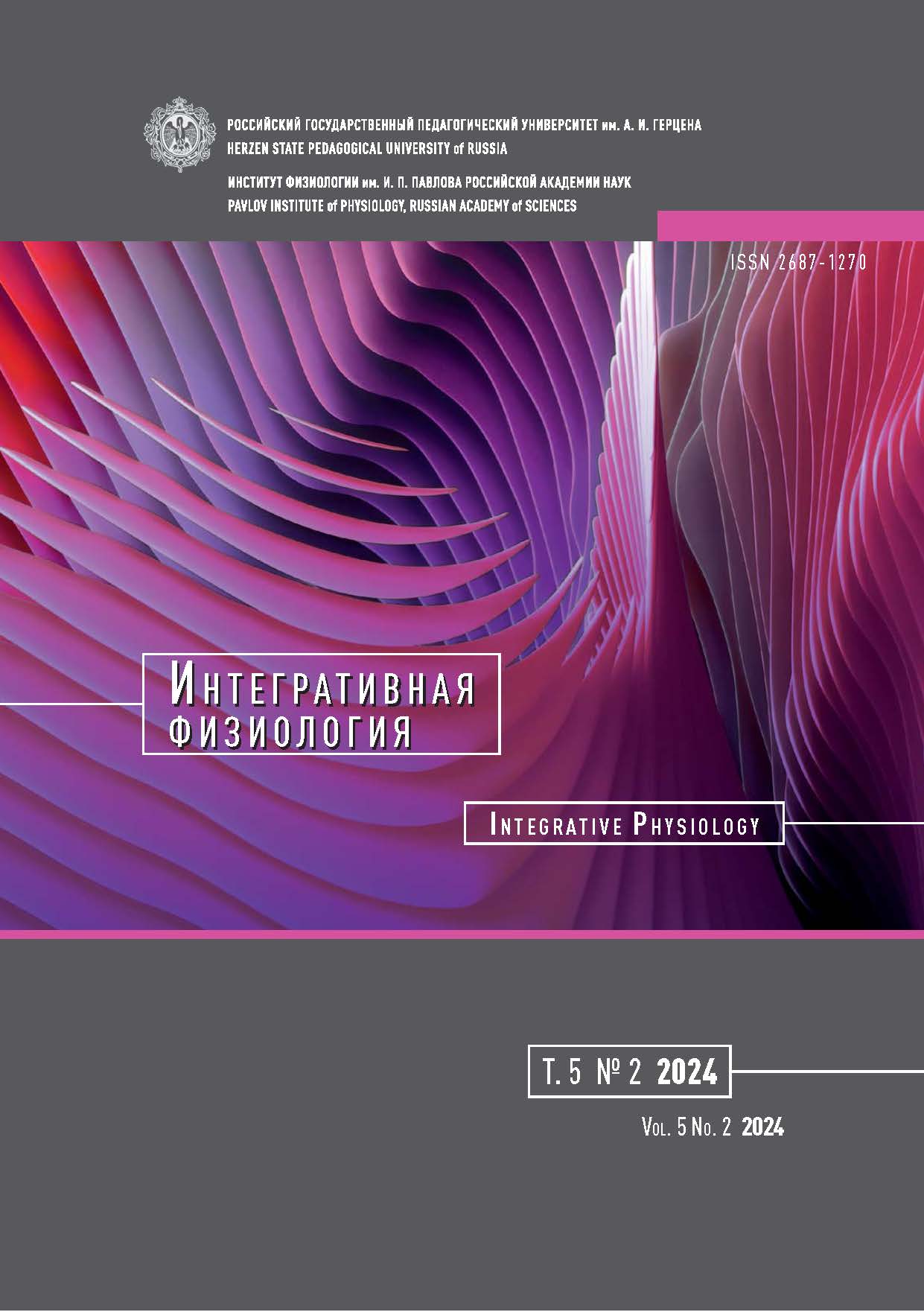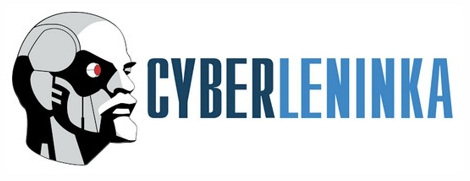Spontaneous fluctuations in brain electrical activity and their role in movement initiation
DOI:
https://doi.org/10.33910/2687-1270-2024-5-2-144-155Keywords:
movement initiation, readiness potential, self-initiated movement, imperative signal, EEG, beamforming, wavelet analysisAbstract
The article reports the results of an experimental research. A sample of 20 apparently healthy individuals performed reaching tasks toward a target either spontaneously or in response to an imperative signal with their EEG recorded. Six independent sources of EEG activity were identified: premotor areas, supplementary motor area, primary motor areas, and the posterior parietal cortex. We compared slow fluctuations in potential and desynchronization of EEG activity in the alpha and beta bands across the independent sources during the initiation of movement in two experimental conditions: cued and self-initiated reaching. Alpha desynchronization and beta desynchronization in the contralateral premotor areas was observed 3,000 ms and 600 ms prior to the start of self-initiated reaching, respectively. In contrast, during cued movement, beta desynchronization in the premotor areas was seen 2,000 ms before movement onset, exceeding the reaction time to the signal (about 800 ms). Additionally, alpha desynchronization in the posterior parietal cortex was recorded 1,300 ms before movement onset. These results suggest that activation of premotor areas and the posterior parietal cortex occurs even before the presentation of the imperative signal. The findings indicate that movement initiation is most likely triggered during a specific phase of spontaneous slow fluctuations in brain electrical activity.
References
Armstrong, S., Sale, M. V., Cunnington, R. (2018) Neural oscillations and the initiation of voluntary movement. Frontiers in Psychology, vol. 9, article 2509. https://doi.org/10.3389/fpsyg.2018.02509 (In English)
Arts, L. P., van den Broek, E. L. (2022) The fast continuous wavelet transformation (fCWT) for real-time, high-quality, noise-resistant time–frequency analysis. Nature Computational Science, vol. 2, no. 1, pp. 47–58. https://doi.org/10.1038/s43588-021-00183-z (In English)
Cunnington, R., Windischberger, C., Moser, E. (2005) Premovement activity of the pre-supplementary motor area and the readiness for action: Studies of time-resolved event-related functional MRI. Human Movement Science, vol. 24, no. 5-6, pp. 644–656. https://doi.org/10.1016/j.humov.2005.10.001 (In English)
Desmurget, M., Sirigu, A. (2009) A parietal-premotor network for movement intention and motor awareness. Trends in cognitive sciences, vol. 13, no. 10, pp. 411–419. https://doi.org/10.1016/j.tics.2009.08.001 (In English)
Frolov, A., Aziatskaya, G., Bobrov, P. et al. (2017) Electrophysiological brain activity during the control of a motor imagery-based brain–computer interface. Human Physiology, vol. 43, no. 5, pp. 501–511. https://doi.org/10.1134/S036211971705005X (In English)
Frolov, A., Bobrov, P., Biryukova, E. et al. (2020). Using multiple decomposition methods and cluster analysis to find and categorize typical patterns of EEG activity in motor imagery brain-computer interface experiments. Frontiers in Robotics and AI, vol. 7, article 88. https://doi.org/10.3389/frobt.2020.00088 (In English)
Gálvez-García, G., Albayay, J., Rehbein, L. et al. (2018) Response inhibition as a function of movement complexity and movement type selection. Frontiers in Psychology, vol.9, article 2290. https://doi.org/10.3389/fpsyg.2018.02290 (In English)
Gelmgoltz, K. (1923) Skorost’ rasprostranenia nervnogo vozbuzhdenia [Excitation propagation velocity]. Moscow: Politizdat Publ., 134 p. (In Russian)
Grosse-Wentrup, M., Liefhold, C., Gramann, K. et al. (2009) Beamforming in noninvasive brain-computer interfaces. IEEE Transactions on Biomedical Engineering, vol. 56, no. 4, pp. 1209–1219. https://doi.org/10.1109/TBME.2008.2009768 (In English)
Hramov, A. E., Maksimenko, V. A., Pisarchik, A. N. (2021) Physical principles of brain–computer interfaces and their applications for rehabilitation, robotics and control of human brain states. Physics Reports, vol. 918, pp. 1–133. https://doi.org/10.1016/j.physrep.2021.03.002 (In English)
Hobson, H. M., Bishop, D. V. M. (2017) The interpretation of mu suppression as an index of mirror neuron activity: past, present and future. Royal Society Open Science, vol. 4, no. 3, article 160662. https://doi.org/10.1098/rsos.160662 (In English)
Jaiswal, A., Nenonen, J., Stenroos, M. et al. (2020) Comparison of beamformer implementations for meg source localization. NeuroImage, vol. 216, article 116797. https://doi.org/10.1016/j.neuroimage.2020.116797 (In English)
Kurganskaya, M. E., Isaev, M. R., Bobrov, P. D. (2024) Dinamika sinkhronizatsii i desinkhronizatsii EEG pri vypolnenii real’nogo i myslennogo dvizheniya ruki, napravlennogo k vidimoj tseli [Dynamics of EEG synchronization and desynchronization performing real and imagined hand reaching]. Zhurnal Vysshei Nervnoi Deiatolnosti imeni I. P. Pavlova, vol. 74, no. 2, pp. 210–222. https://doi.org/10.31857/S0044467724020069 (In Russian).
Lee, T.-W., Girolami, M., Sejnowski. T. J. (1999) Independent component analysis using an extended infomax algorithm for mixed subgaussian and supergaussian sources. Neural computation, vol. 11, no. 2, pp. 417–441. https://doi.org/10.1162/089976699300016719 (In English)
Libet, B., Gleason, C. A., Wright, E. W., Pearl, D. K. (1983). Time of conscious intention to act in relation to onset of cerebral activity (readiness-potential): The unconscious initiation of a freely voluntary act. Brain, vol. 106, no. 3, pp. 623–642. https://doi.org/10.1093/brain/106.3.623 (In English)
Mitiureva, D., Bobrov, P., Rebreikina, A., Sysoeva, O. (2023) An inclusive paradigm to study mu-rhythm properties. International Journal of Psychophysiology, vol. 190, pp. 42–55. https://doi.org/10.1016/j.ijpsycho.2023.05.353 (In English)
Monto, S., Palva, S., Voipio, J. et al. (2008) Very slow EEG fluctuations predict the dynamics of stimulus detection and oscillation amplitudes in humans. Journal of Neuroscience, vol. 28, no. 33, pp. 8268–8272. https://doi.org/10.1523/JNEUROSCI.1910-08.2008 (In English)
Pfurtscheller, G, Lopes da Silva, F. H. (1999) Event-related EEG/MEG synchronization and desynchronization: Basic principles. Clinical Neurophysiology, vol. 110, no. 11, pp. 1842–1857. https://doi.org/10.1016/s1388-2457(99)00141-8 (In English)
Pfurtscheller, G., Neuper, C., Krausz, G. (2000) Functional dissociation of lower and upper frequency mu rhythms in relation to voluntary limb movement. Clinical Neurophysiology, vol. 111, no. 10, pp. 1873–1879. https://doi.org/10.1016/s1388-2457(00)00428-4 (In English)
Proctor, R. W., Schneider, D. W. (2018) Hick’s law for choice reaction time: A review. Quarterly Journal of Experimental Psychology, vol. 71, no. 6, pp. 1281–1299. https://doi.org/10.1080/17470218.2017.1322622 (In English)
Rhodes, B. J., Bullock, D., Verwey, W. B. et al. (2004) Learning and production of movement sequences: Behavioral, neurophysiological, and modeling perspectives. Human Movement Science, vol. 23, no. 5, pp. 699–746. https://doi.org/10.1016/j.humov.2004.10.008 (In English)
Schmidt, S., Jo, H. G., Wittmann, M., Hinterberger, T. (2016) “Catching the waves” — slow cortical potentials as moderator of voluntary action. Neuroscience & Biobehavioral Reviews, vol. 68, pp. 639–650. https://doi.org/10.1016/j.neubiorev.2016.06.023 (In English)
Zama, T., Takahashi, Y., Shimada, S. (2019). Simultaneous EEG-NIRS measurement of the inferior parietal lobule during a reaching task with delayed visual feedback. Frontiers in Human Neuroscience, vol. 13, article 301. https://doi.org/10.3389/fnhum.2019.00301 (In English)
Downloads
Published
Issue
Section
License
Copyright (c) 2025 Marina E. Kurgansky, Pavel D. Bobrov, Mikhail R. Isaev

This work is licensed under a Creative Commons Attribution-NonCommercial 4.0 International License.
The work is provided under the terms of the Public Offer and of Creative Commons public license Creative Commons Attribution 4.0 International (CC BY 4.0).
This license permits an unlimited number of users to copy and redistribute the material in any medium or format, and to remix, transform, and build upon the material for any purpose, including commercial use.
This license retains copyright for the authors but allows others to freely distribute, use, and adapt the work, on the mandatory condition that appropriate credit is given. Users must provide a correct link to the original publication in our journal, cite the authors' names, and indicate if any changes were made.
Copyright remains with the authors. The CC BY 4.0 license does not transfer rights to third parties but rather grants users prior permission for use, provided the attribution condition is met. Any use of the work will be governed by the terms of this license.







